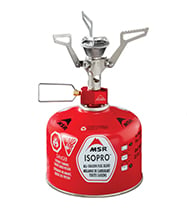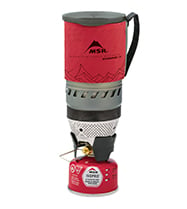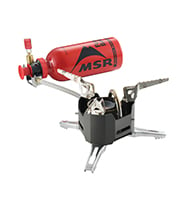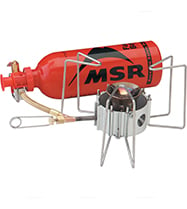A Guide to MSR Backpacking Stoves
MSR debuted its first stove in 1973. The pragmatically named Model 9 stove allowed mountaineers to melt snow faster for drinking water, radically improving their safety at altitude. As the Model 9 gained traction for its efficiency and reliability in demanding conditions, it set the course for decades of stove innovations. Today, MSR backpacking stoves are iconic on camping adventures. Like all of our gear, we’re hyper-focused on their details. Each component is thoughtfully engineered, purposeful and, most importantly, dependable.
We believe you should be able to trust your stove like you do your best trail partner. And for every adventurer and need out there, there’s an MSR stove to match. Here’s a look at our lineup.
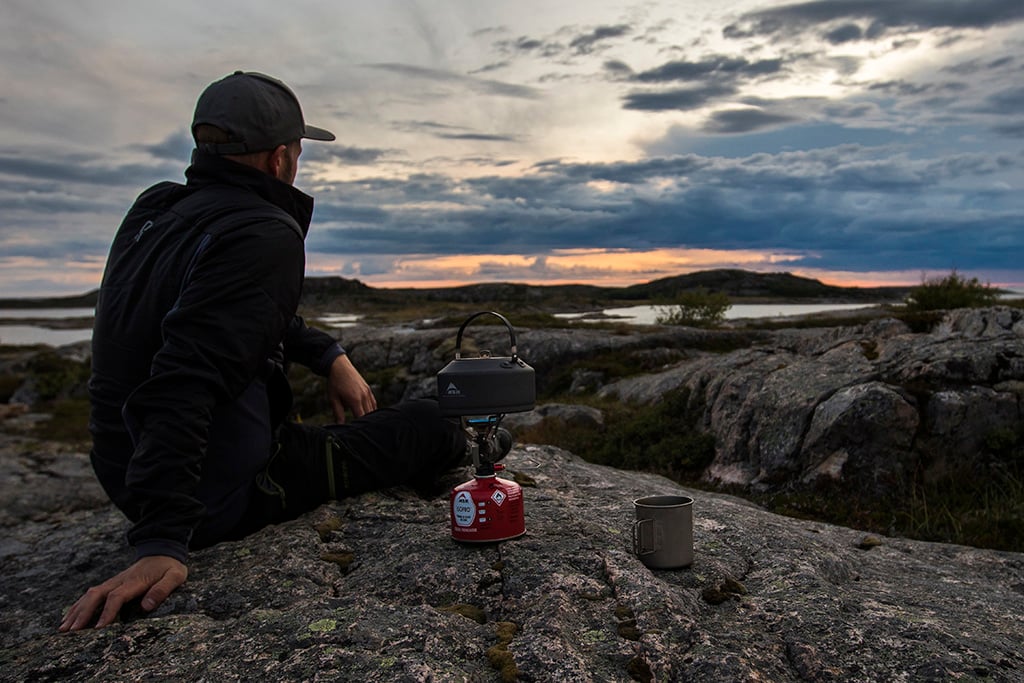
Canister Backpacking Stoves
| Stove | Weight | Boil Speed for 1 Liter |
Fuel Type | Water Boiled (per oz. of fuel) |
Best For |
|---|---|---|---|---|---|
| 73g (2.6-oz.) |
3.5 minutes |
IsoPro™ | 2 liters | Fast-and-light missions; or as backup stove | |
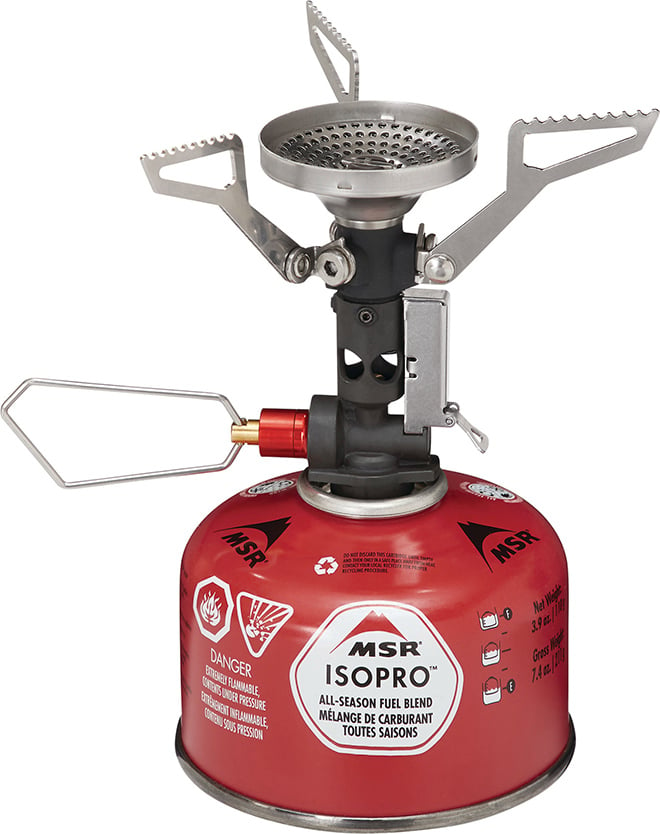
|
83g (2.9-oz.) |
3.3 minutes | IsoPro™ | 2.2 liters | Ultralight backpacking during 3+ seasons, with colder temps |
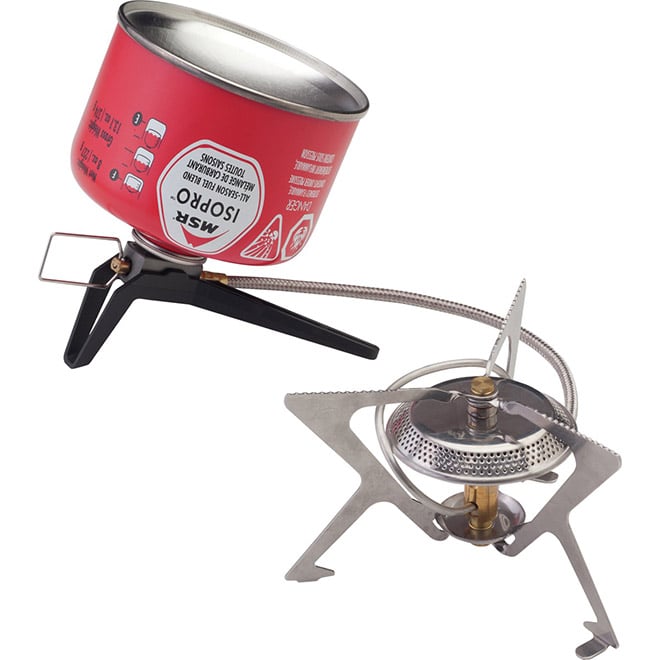
|
187g (6.6-oz.) |
3.6 minutes | IsoPro™ | 1.8 liters | General camp cooking during 3+ seasons, with colder temps |
Because they attach to pre-pressurized fuel canisters and require no priming, canister stoves are simple, easy to use and can be made in incredibly light designs.
| Pros | Cons |
|
|
PocketRocket® 2
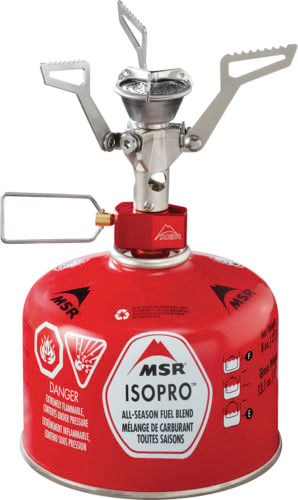
Our tiniest stove is a favorite of the fast-and-light crowd and is a simple, no-frills solution. Still, this backpacking stove boils a liter of water in just 3.5 minutes in fair weather. Its burner pushes a powerful flame and features subtle windshields that improve its efficiency in a breeze. Its weight rivals that of alcohol stoves but offers faster boil times. If shaving grams is your priority, or you’re simply seeking a compact, dependable and affordable backpacking stove, you can’t go wrong with the PocketRocket 2.
PocketRocket® Deluxe
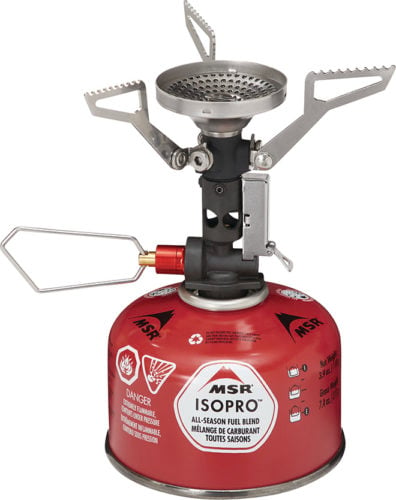
The PocketRocket Deluxe adds enhanced features to our PocketRocket design, making it a backpacking stove that’s more capable in a wider range of conditions. If your adventures involve crisp mornings or fall-like temps this is your ticket. With its built-in pressure regulator, the stove delivers consistently faster boil times than unregulated stoves, even when temperatures dip. The broader burner offers better heat distribution and simmering, and a built-in piezo igniter provides push-start lighting. Ideal for backpackers, this micro-stove has you covered.
WindPro™ II
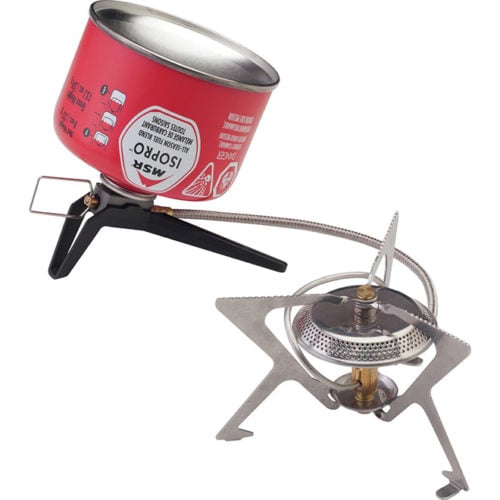
The WindPro II is the ultimate go-to for real cooking on backpacking trips. It combines the stability of a remote-burner design with the convenience of a canister stove, making it great for use with larger pots. The WindPro can run on liquid-feed mode by inverting the canister. This allows it to operate far better in cold conditions. The remote-burner design also lets you make use of a windscreen (unsafe with most canister backpacking stoves) to protect the flame. This backpacking stove is a long-time staff favorite for its simplicity and versatility.
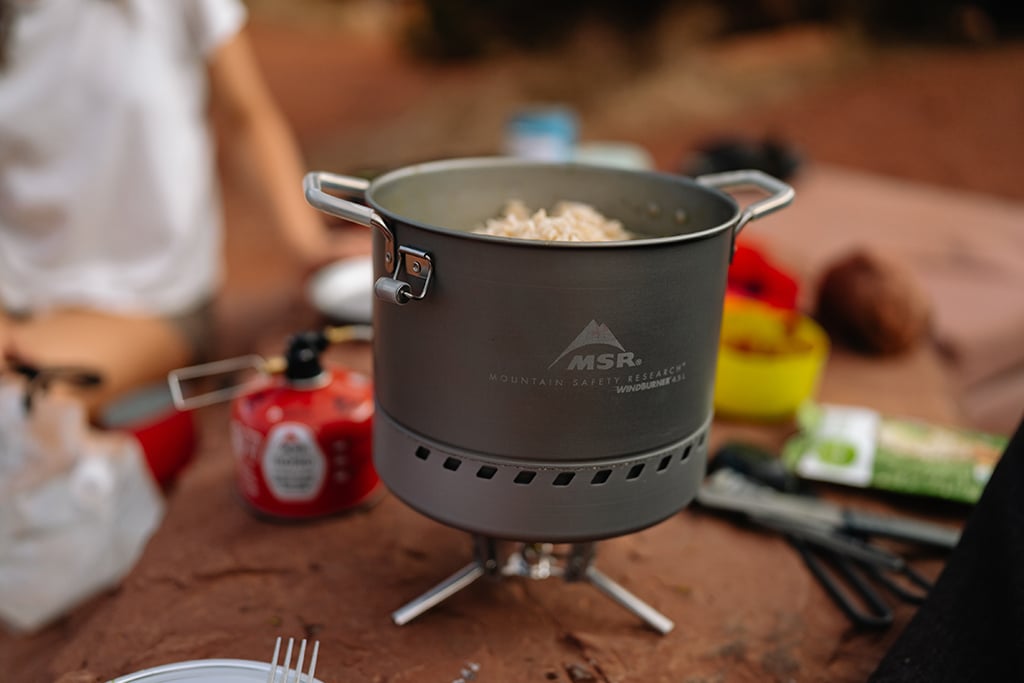
Backpacking Stove Systems
| Stove System | Weight | Boil Speed for 1 Liter |
Fuel Type | Water Boiled (per oz. of fuel) |
Best For |
|---|---|---|---|---|---|
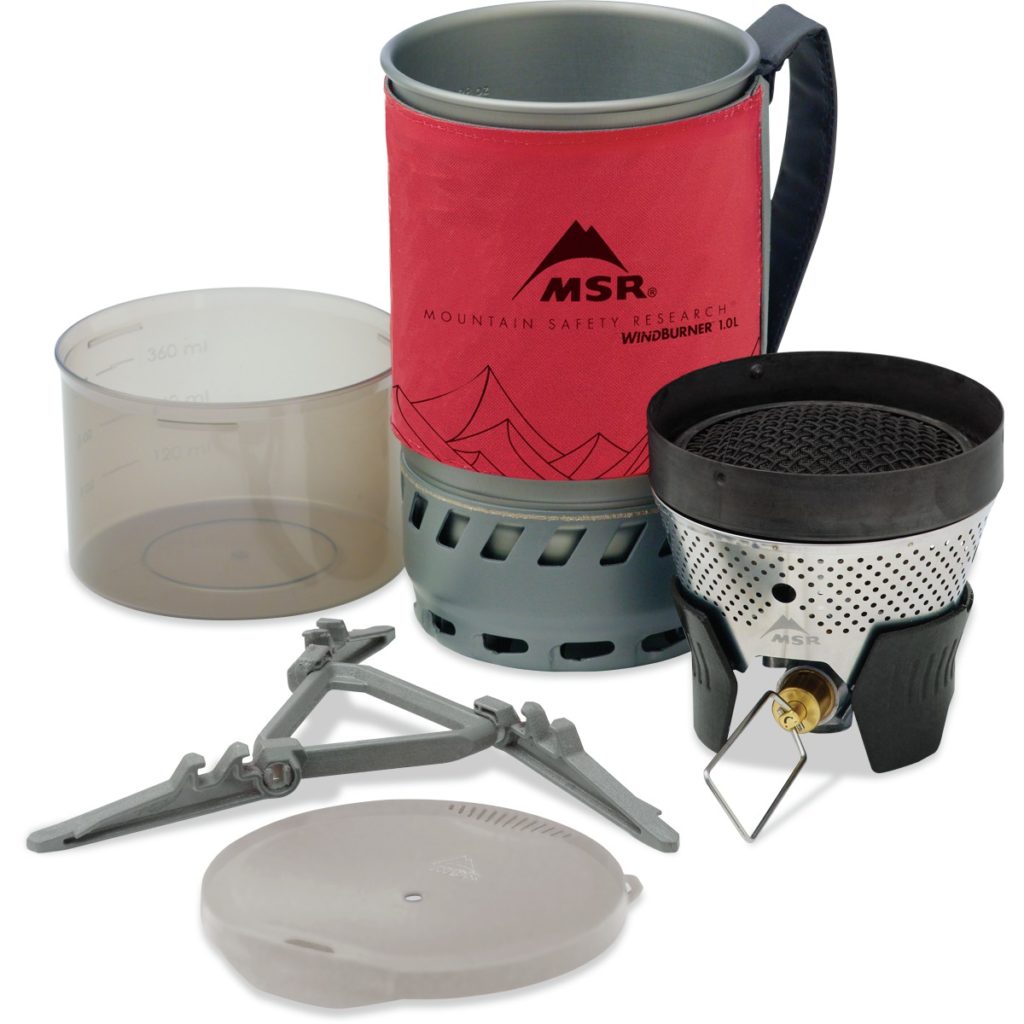
|
433g (15.3-oz) |
4.5 minutes |
IsoPro™ | 2.3 liters | 1-2 backpackers seeking fast, heat-and-eat meals |
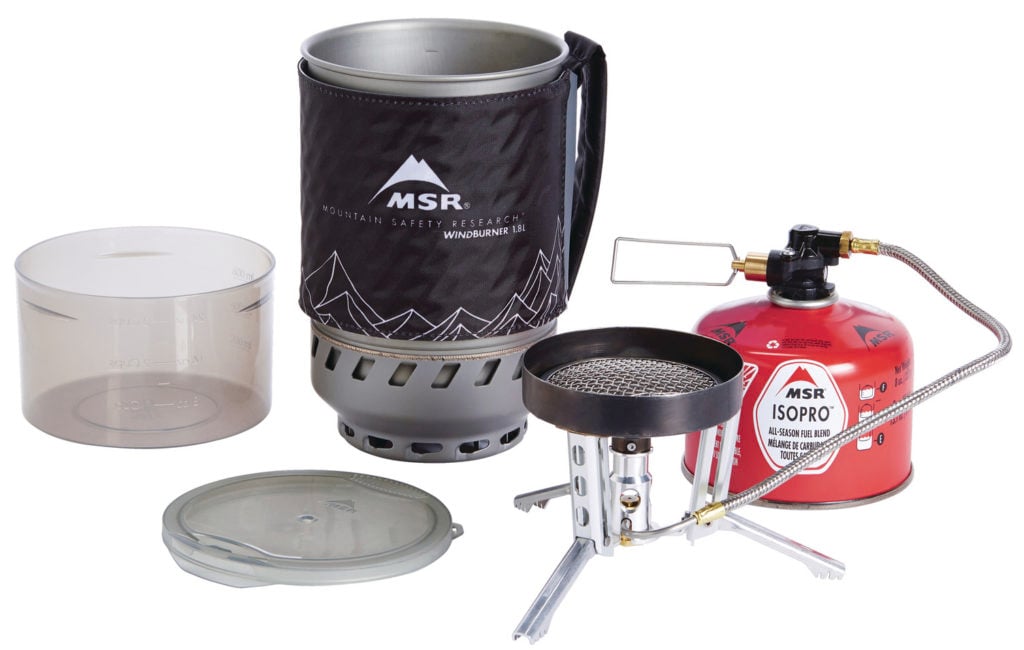
|
597g (21.1-oz.) |
4.5 minutes | IsoPro™ | 2.3 liters | 2-3 backpackers seeking fast, heat-and-eat meals |
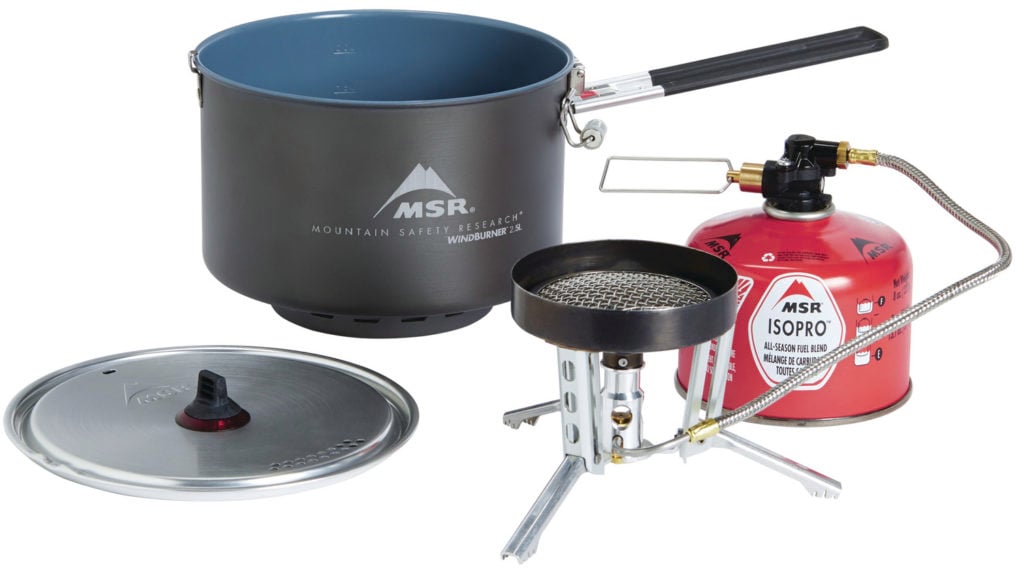
|
591g (6.2-oz.) |
6.2 minutes | IsoPro™ | 2.3 liters | Cooking real meals and sticky foods, thanks to a non-stick pot |
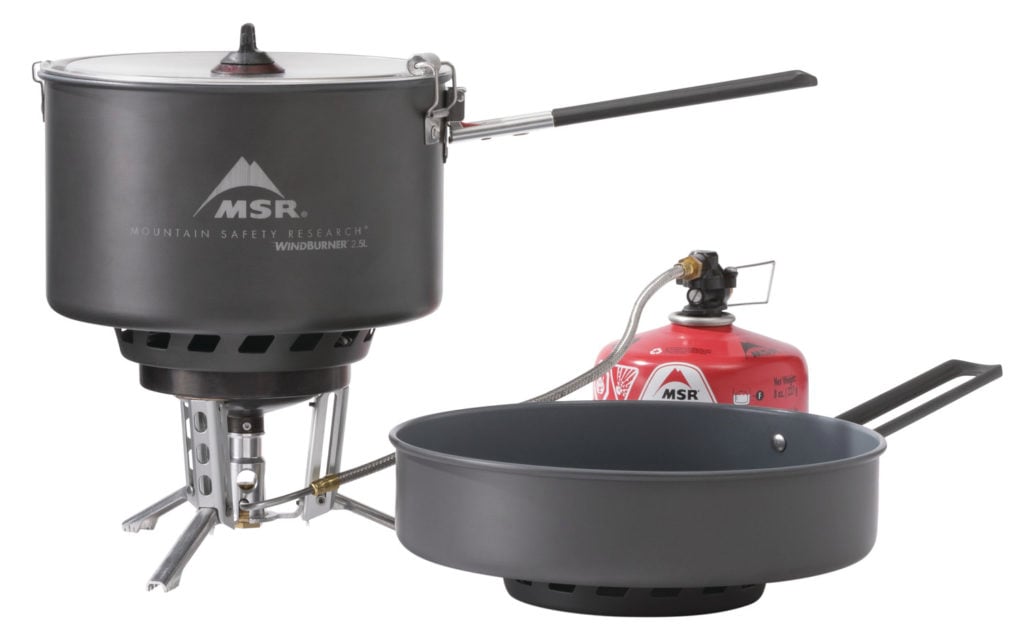
|
457g (16.13-oz.) |
6.2 minutes |
IsoPro™ | 1.8 liters | Cooking complex meals with sticky foods, thanks to non-stick pots |
| 417g (14.7-oz.) |
3.5 minutes | IsoPro™ | 2.5 liters | Climbs, ski tours and other trips where time and pack space are at a premium | |
| 496g (17.5-oz.) |
3 minutes | IsoPro™ | 2.8 liters | 2-3 mountaineers or skiers needing to melt snow or boil water fast | |
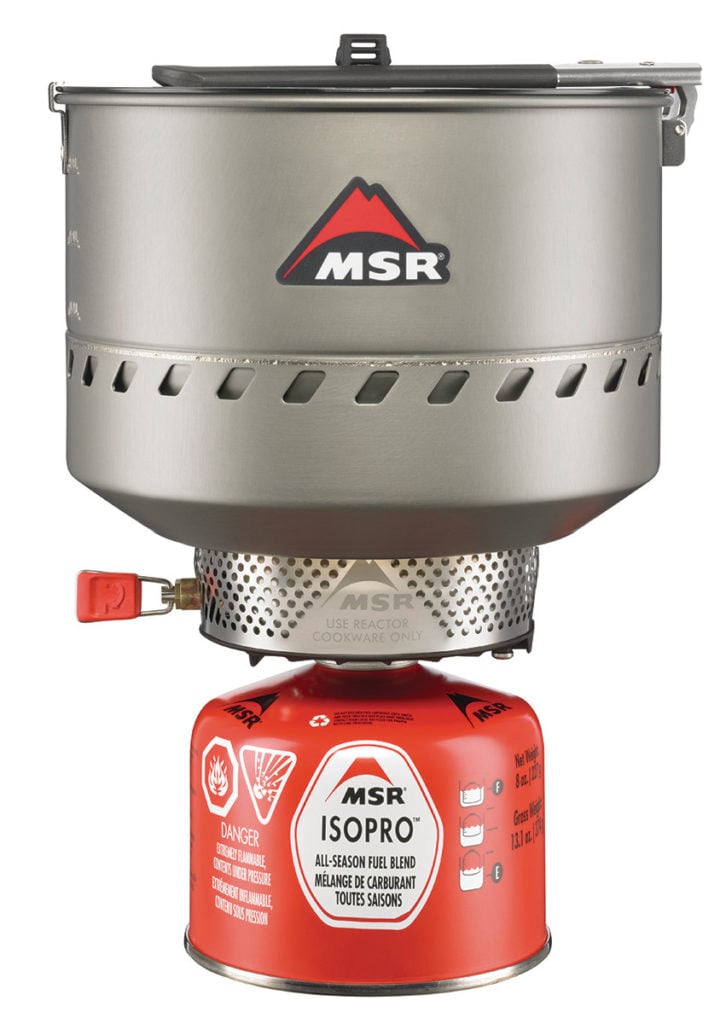
|
588g (20.7-oz.) |
3 minutes | IsoPro™ | 2.8 liters | 2-4 mountaineers or skiers needing to melt snow or boil water fast |
MSR’s all-in-one stove systems feature burners and pots purposely engineered to work together. This integration makes them hyper-fast and windproof. They’re also the only systems to harness the efficiency of a unique radiant burner.
| Pros | Cons |
|
|
Windburner® Stove Systems

WindBurner systems are exceptionally fast, windproof and feature convenient features that everyday backpackers seek. Need hot water or a warm meal fast at the end of a long day? These systems deliver. More importantly, you can count on that speed in windy and colder conditions. Their enclosed design blocks out wind, and an internal regulator keeps their output high in low temperatures. To expand your cooking options, the WindBurner collection features a variety of pots for everyone from solo backpackers to small groups cooking gourmet meals.
Reactor® Stove Systems
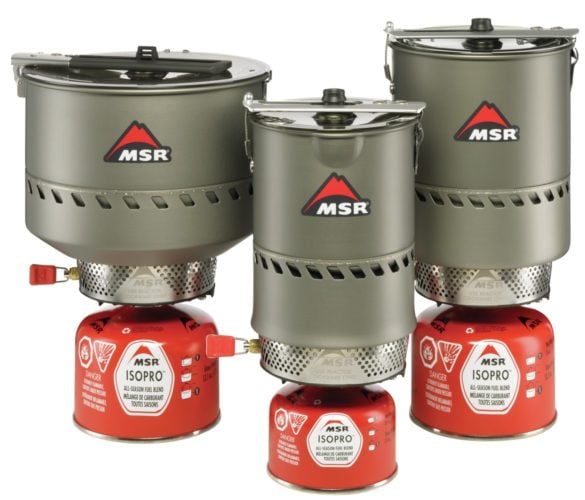
Engineered as snow-melting powerhouses for alpinists and rapid water-boilers for big-wall climbers, Reactors are still the fastest backpacking stoves in the backcountry. In fact, it’s hard to take your eye off them before they start rolling, bubbling and steaming. Their enclosed design shields the burner from wind, and their speed and efficiency help save fuel, keeping haul bags and backpacks lighter. Reactors excel in cold weather and at elevation thanks to advanced technologies that keep them cranking in environments where traditional canister backpacking stoves fail.
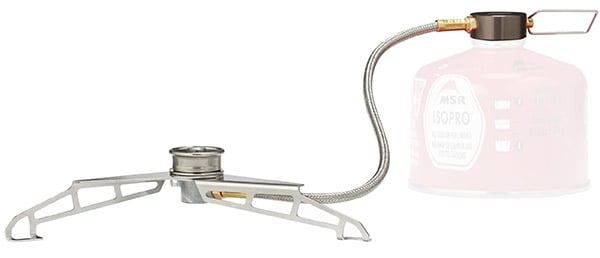
Bonus Canister Stove Accessory: LowDown™ Remote Stove Adapter
New for 2022, the LowDown Remote Stove Adapter is an upgrade for your canister stove or stove system. Weighing in at only 6.2 oz and compatible with all MSR canister stoves and stove systems (except the SuperFly™), it can turn the tiny Pocket Rocket into a group cooking pro or transform a Windburner stove system into a coffee machine on your camp table. The foldout legs create a wide, stable base that significantly lowers the stove’s height, for stability on uneven ground or when cooking around young campers or dogs. It also allows stoves of nearly any size to support larger pots and pans. The remote valve and fuel line move the flame control off the stove to make cooking adjustments easier, particularly helpful if that pot of pasta is starting to boil over.
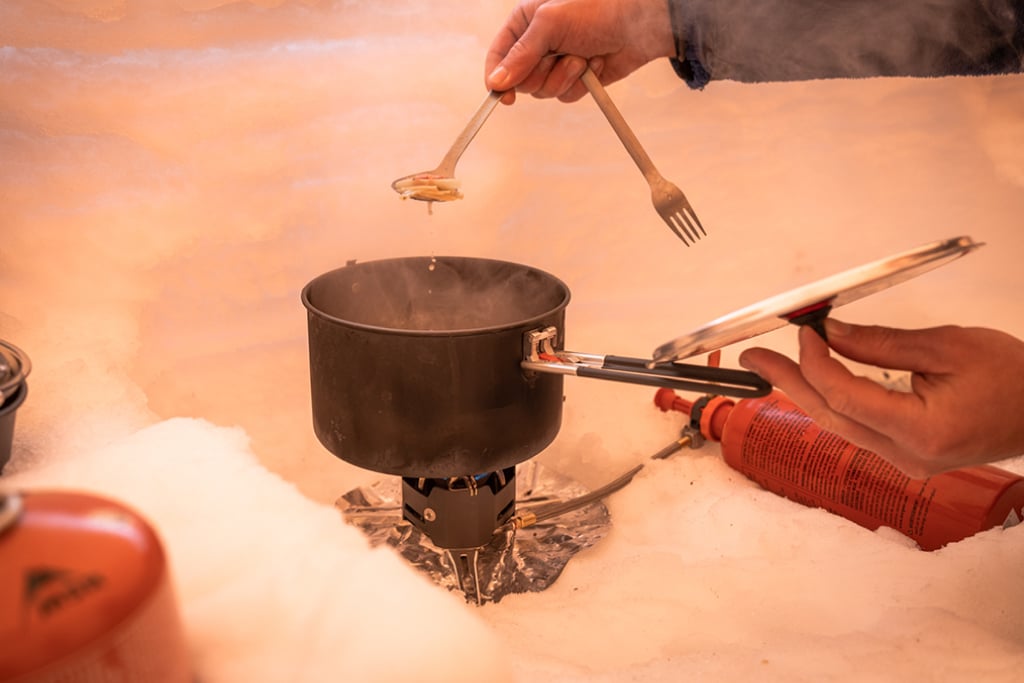
Liquid Fuel Backpacking Stoves
| Stove | Weight | Boil Speed for 1 Liter |
Fuel Type | Water Boiled (per oz. of fuel) |
Best For |
|---|---|---|---|---|---|
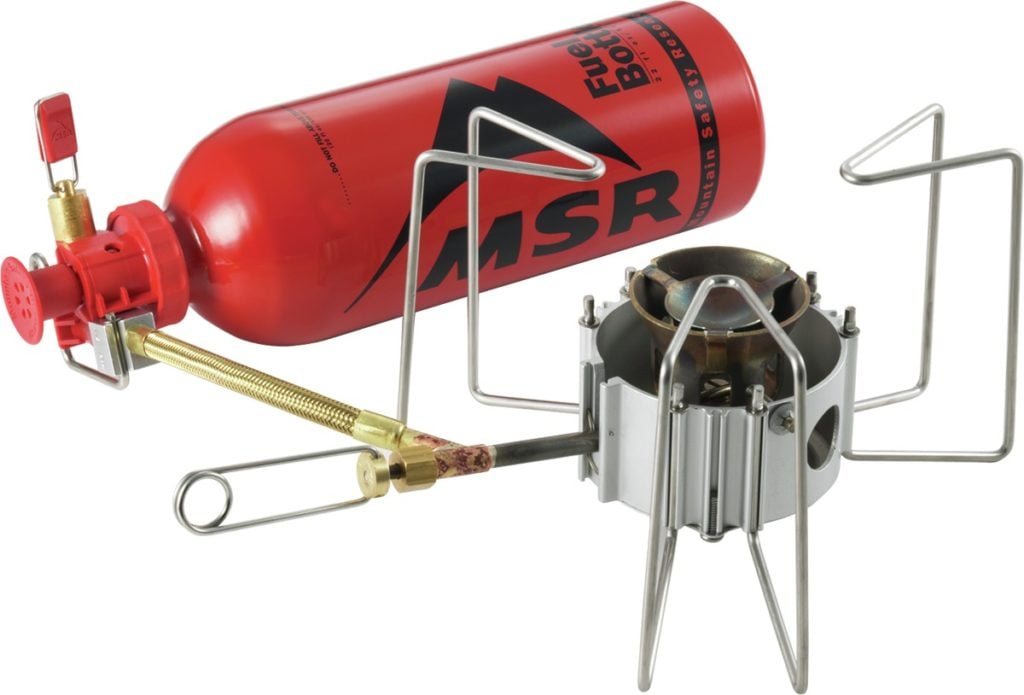
|
401g (14.1-oz.) (White gas) |
3.5 minutes (White gas) |
White gas, Kerosene, Diesel, Unleaded auto gas, Jet fuel |
1.6 liters (White gas) |
Precision simmering, large pot stability |
|
|
318g (11.2-oz.) (White gas) |
3.5 minutes
(White gas) |
White gas, IsoPro, Kerosene, Unleaded auto gas |
1.3 liters (White gas) |
Using canister fuel in warm months, liquid fuel in winter |
| 268g (9.5-oz.) (IsoPro) |
3.75 minutes (IsoPro) |
1.8 liters (IsoPro) |
|||
|
|
318g (11.2-oz.) (White gas) |
3.5 minutes (White gas) |
White gas, Kerosene, Unleaded auto gas |
1.3 liters (White gas) |
International travel, winter cooking |
|
|
326g (11.5-oz.) |
3.9 minutes |
White gas | 1.5 liters | General backpacking, winter adventures |
|
|
384g (13.5-oz.) (White gas) |
3.5 minutes (White gas) |
White gas, Kerosene, Diesel, Unleaded auto gas |
1.5 liters (White gas) |
Expeditions |
Liquid fuel stoves operate far better than canister stoves in extreme cold. They’re also more eco-friendly thanks to refillable fuel bottles, and some can run off multiple fuel types, making them a safer bet on far-flung international adventures where canisters might not be available. MSR liquid fuel stoves are also an excellent choice for emergency preparedness kits thanks to their exceptional field maintainability and legendary durability.
| Pros | Cons |
|
|
DragonFly®

From simmering sauces to cooking backcountry feasts and melting snow, the DragonFly is a solid, versatile choice and one seriously stable machine. This celebrated backpacking stove handles large pots with ease and features a unique valve design that offers precise flame control for truly low simmering. Popular among guide institutions and outfitters, this sophisticated stove burns a wide variety of fuel types—providing the confidence that you’ll find fuel to burn in the farthest reaches of the globe.
WhisperLite™ Universal
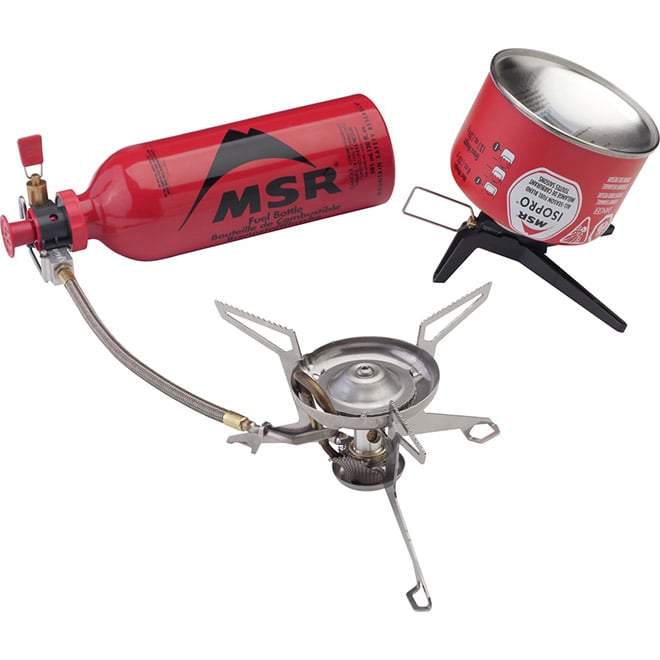
With its ability to burn both canister and liquid fuel, the WhisperLite Universal is a master of all trades. Backpackers, mountaineers and year-round adventurers like the ability to use canister fuel on short summer trips and easily switch to liquid fuel for long trips or when the snow flies. The Universal features technologies that allow it to perform optimally with each type of fuel. Plus, it’s the lightest stove in its class. Add in MSR’s proven long-term durability, and this may be the only backpacking stove you ever need.
WhisperLite™ International
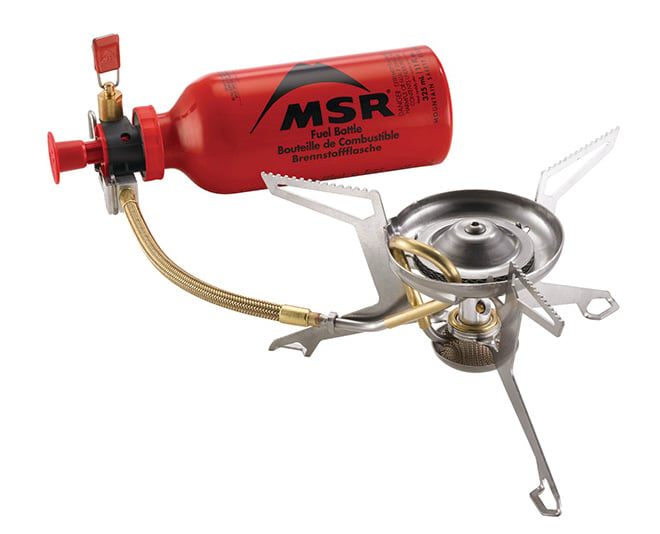
The multifuel capabilities of the WhisperLite International make it a favorite of globe-trotting vagabonds seeking a stove that’s tough, reliable and light. This simple, dependable backpacking stove uses sturdy stainless steel stamped legs for improved durability and pot support. In short, the International delivers all benefits of a time-tested liquid fuel stove in a model that can travel the world with you.
WhisperLite™ (Classic)
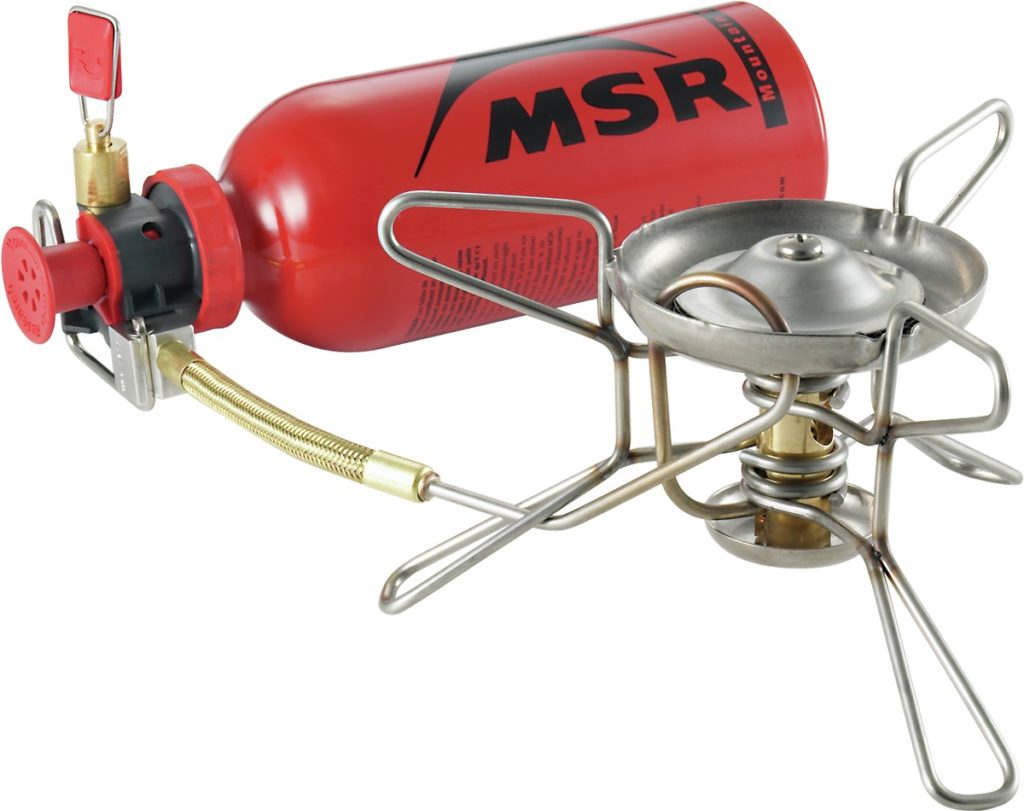
MSR’s most famous stove has appeared on every major thru-hike, on historic expeditions, in dog sleds, and in even in Hollywood movies. Backpackers, climbers, hikers and adventure travelers alike have relied on this classic and now-legendary best seller for more than 30 years. The original WhisperLite provides workhorse dependability and easy-to-use performance in just about any camping or backcountry scenario.
XGK™-EX
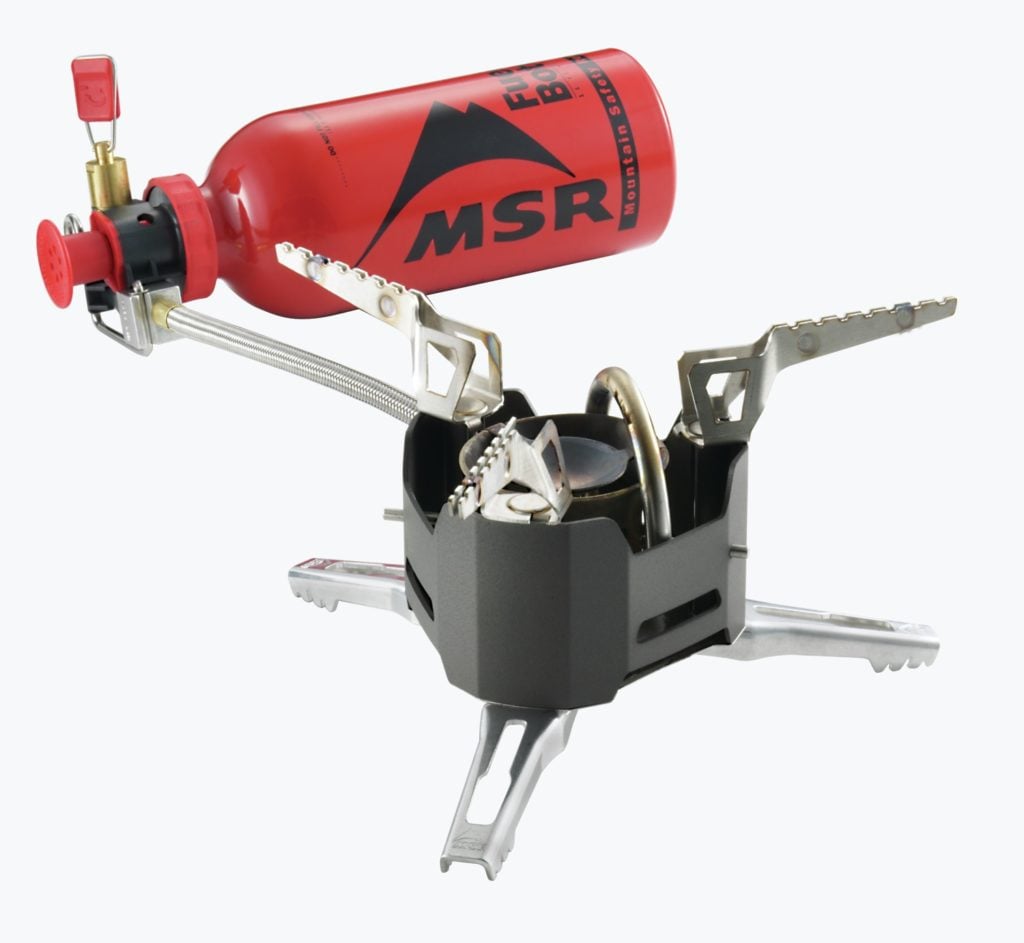
The XGK-EX remains the most trusted expedition stove ever built. This bomber stove pushes a powerful flame that boils water and melts snow incredibly fast. Its multifuel capabilities mean that no matter where you’re headed on the planet, you’ll find a fuel you can burn. Stout and rugged, the XGK-EX holds up to demanding use, and professional explorers, guides and adventurers praise its ability to perform for decades.
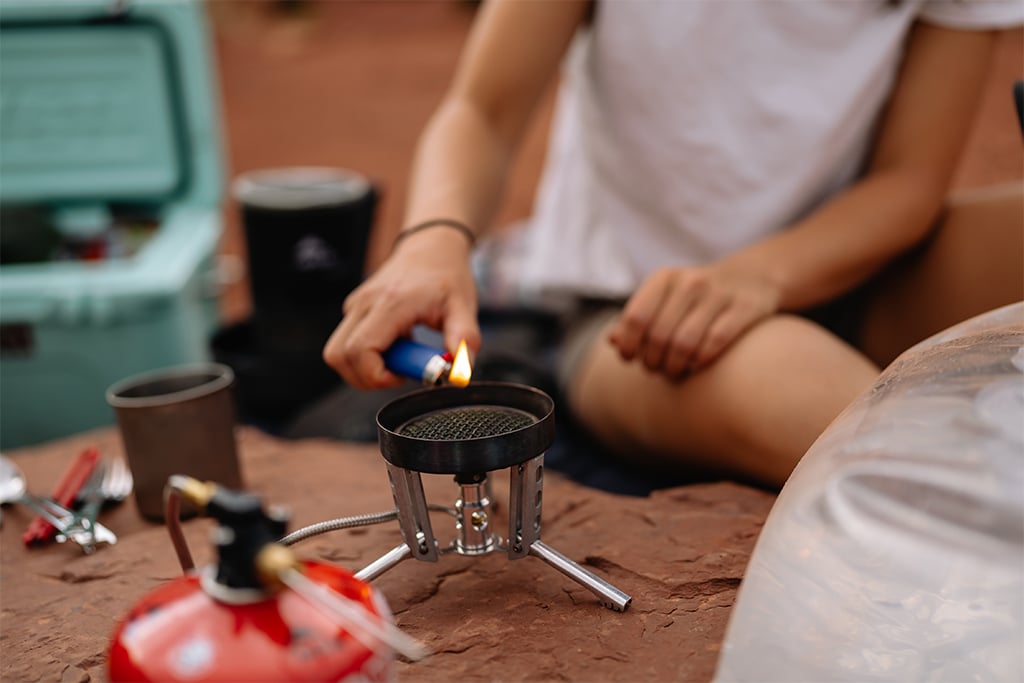
How to Choose the Right Backpacking Stove for You
As with most gear, to choose the right stove for you, consider the types of adventures you plan and your priorities. Here are a few criteria to factor in when selecting the right stove.
Type of adventure: The design and performance of your stove need to match the needs and environments of your trip. Are you moving fast and light? What will the weather and environment be? If traveling internationally, can you find the fuel you’ll need?
Group size: Consider whether your stove will handle the number of people who wish to share it. A micro-stove is not really adequate for groups, and some larger backpacking stoves can be overkill for one person.
Cooking style: Do you prefer boil-only meals or meals that require multiple pots? Some backpacking stoves excel at boiling water and not much else. Others have excellent simmering capabilities but will take longer to heat water. Your cooking style and weight priorities will help you narrow in on the right choice.
Season & weather conditions: As noted above, weather and seasonal conditions impact stove performance. You’ll want to ensure your stove—and its fuel—runs well in the environment you subject it to. Wind and cold are two common elements and many MSR backpacking stoves include built-in features to combat them.
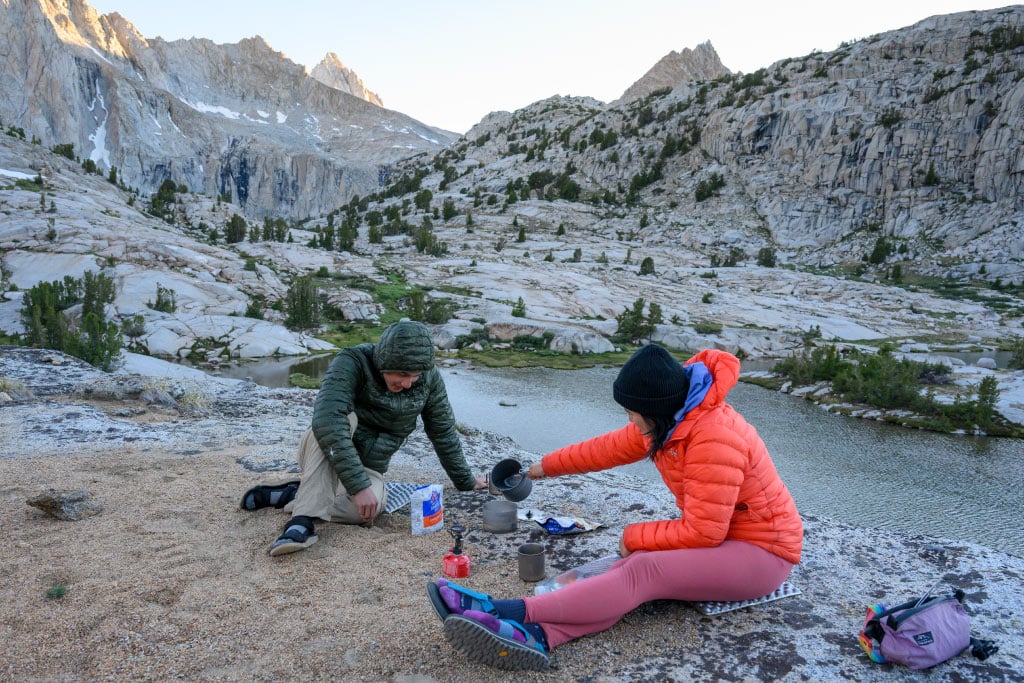
Boil Speed vs. Water Boiled per Ounce of Fuel
When researching stoves, it’s easy to feel overwhelmed by the numbers associated with each stove. It’s even tougher to understand what those numbers mean to real-world performance. This topic deserves a deeper dive, which you can find here: Understanding Stove Performance Numbers. But here’s a snapshot.
Boil Speed: This number tells you how fast a stove can bring water to a boil in average (laboratory) conditions. If you’re always in a hurry to eat or need snow melted fast, you might prioritize this. A fast boil time can mean fuel savings because you reach your boiling point faster. But it can also mean your stove is blazing through a lot of fuel quickly. It all depends on your stove’s design.
Water Boiled per Ounce of Fuel: This is how efficient your stove is with fuel. The more efficient your stove, the more water it boils per ounce of fuel. If you’re a thru-hiker and you need a lot of water boiled out of as little fuel use as possible (to save weight), you want a stove that produces high numbers here.
BTUs / Watts: Regulatory agencies require manufacturers to state a stove’s BTUs, but unfortunately these numbers can be misleading. BTUs indicate the input power of your stove (e.g., 7000, 9000 BTUs). Many people think that the higher the BTUs, the hotter the stove burns. But in fact, a high BTU simply means the stove consumes a lot of fuel. It doesn’t indicate how much heat the stove generates. The heat output is dependent on multiple factors, including burner size and jet size.
While these numbers are great places to start, keep in mind that many factors impact stove performance in the real world, especially wind, temperature and the pressure in your fuel canister.
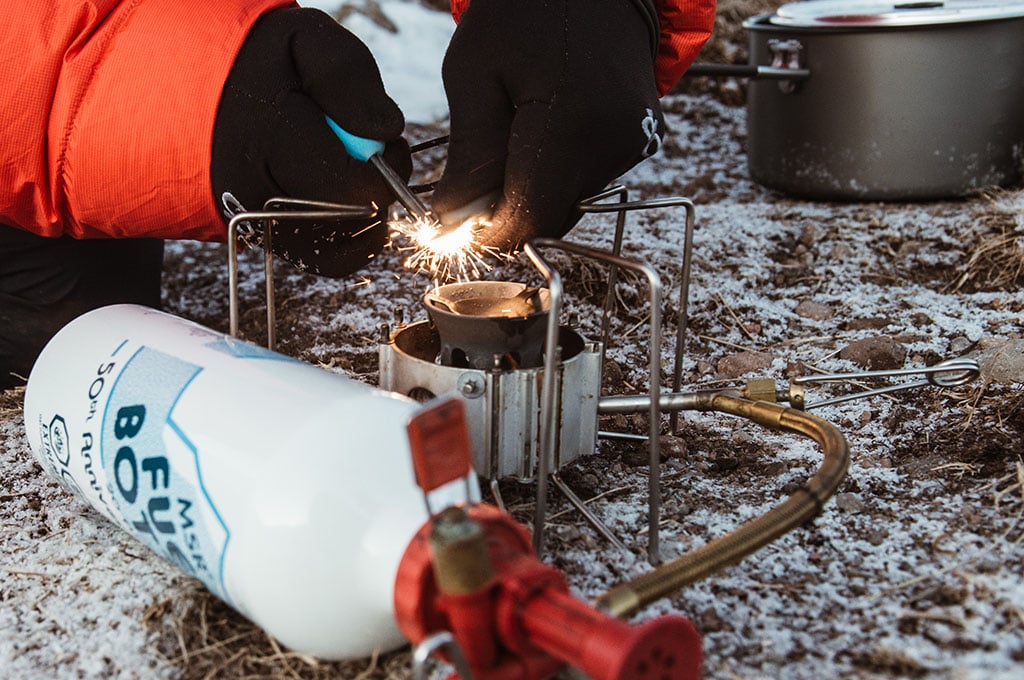
How Much Fuel Should I Carry?
Even with the perfect stove, how do you know how much fuel to carry? We cover this topic in greater depth here: How to Calculate Fuel Needs. But these are good questions to start with:
- How many liters of water will you need for all cooking and drinking? You’ll want to do the math for each day. (If you’re cooking a meal that doesn’t require boiled water, still count that as a liter.)
- What will the weather conditions be? The colder the weather, the harder your stove works and the more fuel it uses.
- Do you need to melt snow? Melting snow takes longer, consuming more fuel.
- Are you cooking gourmet meals? Multi-step meals require more fuel.
The more time you spend backpacking and camping, the better you’ll get at assessing your fuel needs for different types of adventures. It can take years to hone that knowledge. Even so, every trip is different, so always err on the side of packing a little extra.
Checking Fuel in Your Canister
Knowing how much fuel is left in your canisters before or after a trip helps you plan better for the next one. MSR IsoPro™ fuel canisters feature a built-in gauge that allows you to do just that. Check out this video to learn how easy it is to use:
Read more:
- Canister Stoves vs. Liquid Fuel
- 5 Reasons Your Backcountry Stove Should be a Stove System
- Reactor vs. WindBurner: What’s the Difference?
- 5 Advantages of Liquid Fuel Stoves
- How to Get the Most Out of Your Fuel Canisters
Updated. Originally Published September 28, 2020.

